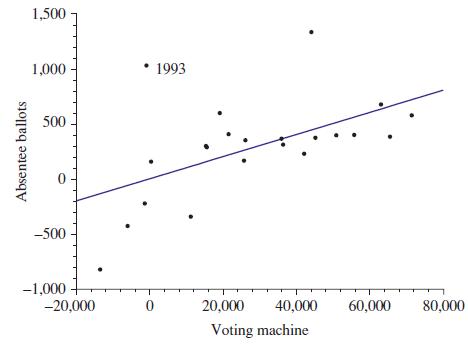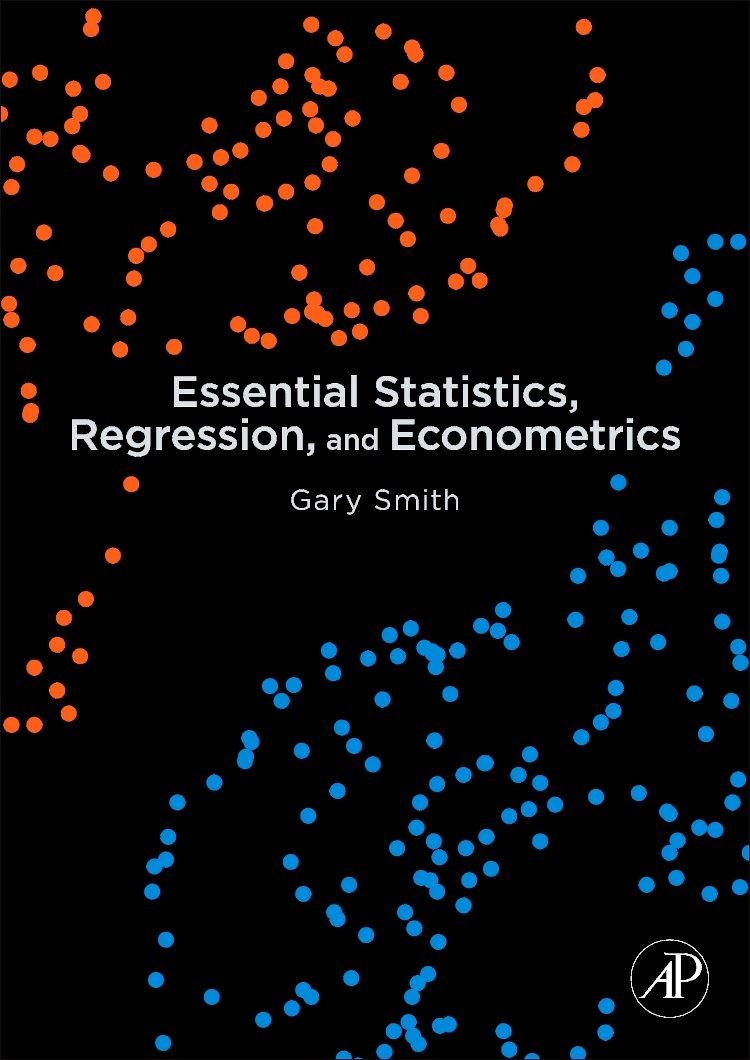In a 1993 election in the second senatorial district in Philadelphia, which would determine which party controlled
Question:
In a 1993 election in the second senatorial district in Philadelphia, which would determine which party controlled the Pennsylvania State Senate, the Republican candidate won based on the votes cast on Election Day, 19,691 to 19,127. However, the Democrat won the absentee ballots, 1,391 to 366, thereby winning the election by 461 votes, and Republicans charged that many absentee ballots had been illegally solicited or cast. A federal judge ruled that the Democrats had engaged in a “civil conspiracy” to win the election and declared the Republican the winner [4]. Among the evidence presented were the data in Figure 8.15 for 22 state senatorial elections in Philadelphia during the period 1982–1993. On the horizontal axis is the difference between the number of votes for the Democratic and Republican candidates cast on Election Day and recorded by voting machines; on the vertical axis is the difference between the number of votes for the Democratic and Republican candidates cast by absentee ballot.
a. What criterion do you think was used to draw a line through the points?
b. Explain why this line’s positive or negative slope is either plausible or counterintuitive.
c. Was this evidence cited by the Republican or Democrat? Explain your reasoning.
Step by Step Answer:

Essential Statistics Regression And Econometrics
ISBN: 9780123822215
1st Edition
Authors: Gary Smith




